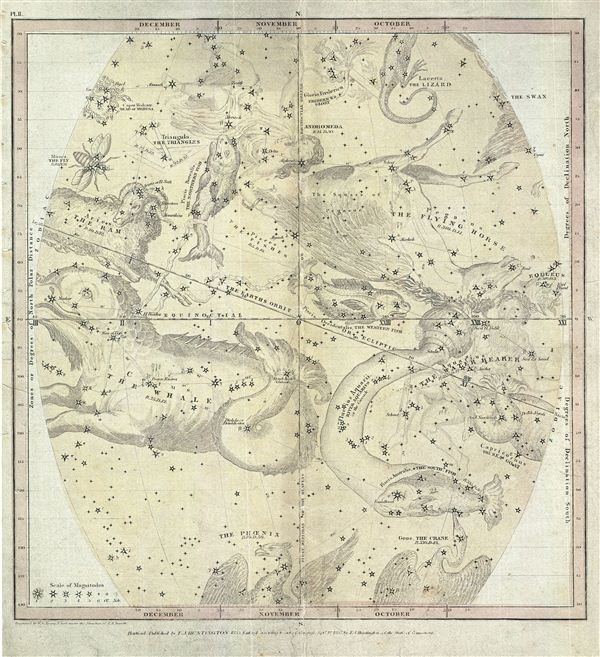This item has been sold, but you can get on the Waitlist to be notified if another example becomes available, or purchase a digital scan.
1835 Burritt / Huntington Map of the Constellations or Stars in October, November and December
DecNovOct-burritt-1835
Title
1835 (dated) 14.5 x 13.5 in (36.83 x 34.29 cm)
Description
Cartographer
Elijah Hinsdale Burritt (April 20, 1794 - January 3, 1838) was an American astronomer and mathematician active in Connecticut. Burritt is often called 'the forgotten astronomer.' Burrito was born to an impoverished family and was initially apprenticed as a blacksmith. After an injury on the job, Burritt turned to astronomy with a passion. He studied at Williams Collage, from which he graduated in 1816. After graduation he moved to Milledgeville, then capital of Georgia. He taught at local schools for several years but, being a northerner, began to feel uncomfortable as his 'yankee attitudes' alienated his peers. He returned to Connecticut in 1829 and turned his parents home into an observatory to pursue his love of astronomy. Burritt then organized a group of 30 settlers to relocate to the newly formed Republic of Texas. There, Burritt and many of his fellow settlers contracted Yellow Fever and died. His seminal work, Burritt's Geography of the Heavens was published from Hartford, Connecticut, in approximately 1833. The work, while primarily educational in nature, was the seminal American geography of the period. Much of the nomenclature they developed, especially regarding the visible stars and constellations of the Southern Hemisphere, is still in use today. The atlas itself consisted of eight charts depicting the heavens seasonally and hemispherically. Constellations were depicted figurally, though only the most important stars were noted. The Geography of the Heavens was the last decorative celestial reference in the 19th century. Burrit's geography was among the most prized possessions of fantasy / horror writer H.P. Lovecraft who wrote:
"My maternal grandmother, who died when I was six, was a devoted lover of astronomy, having made that a specialty at Lapham Seminary, where she was educated; and though she never personally showed me the beauties of the skies, it is to her excellent but somewhat obsolete collection of astronomical books that I owe my affection for celestial science. Her copy of Burritt's Geography of the Heavens is today the most prized volume in my library." (to Maurice W. Moe, 1 January 1915)As a side note Elijah Burritt is the brother of the more famous Elihu Burritt, known for his philanthropic and social work. More by this mapmaker...

